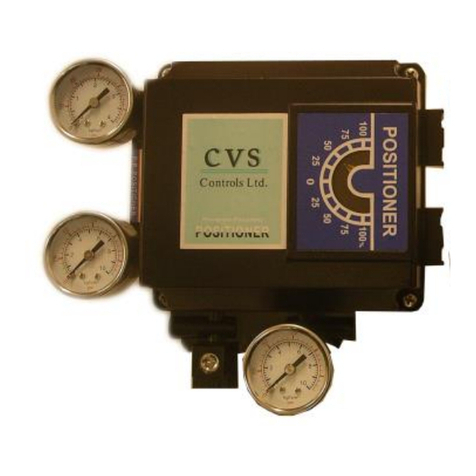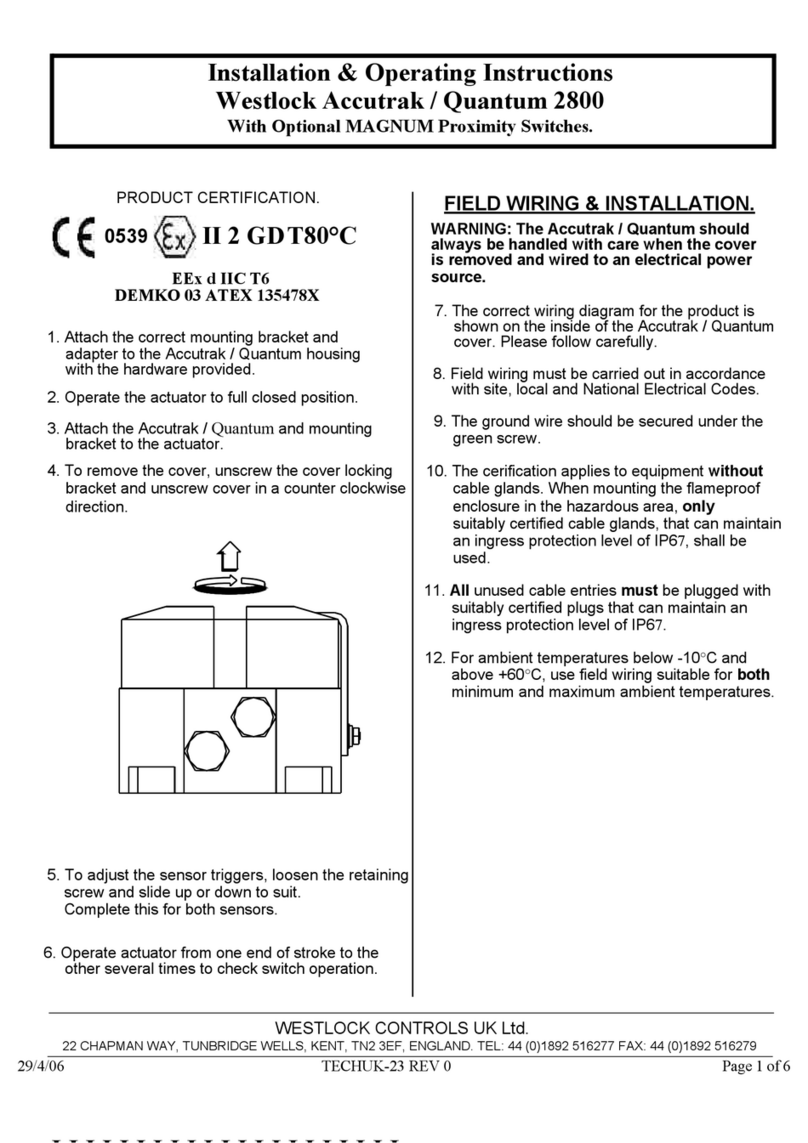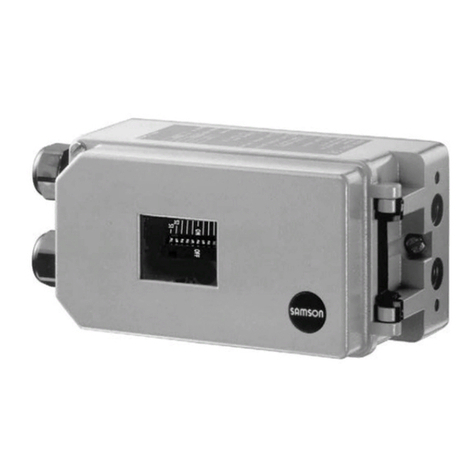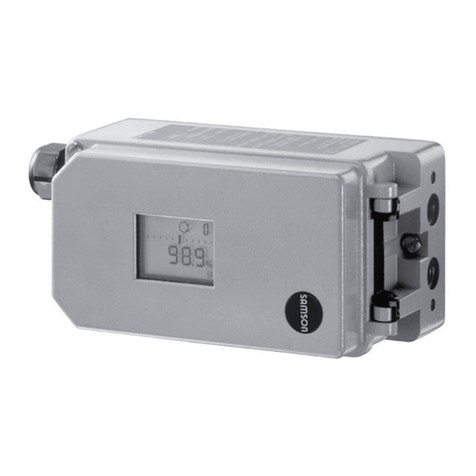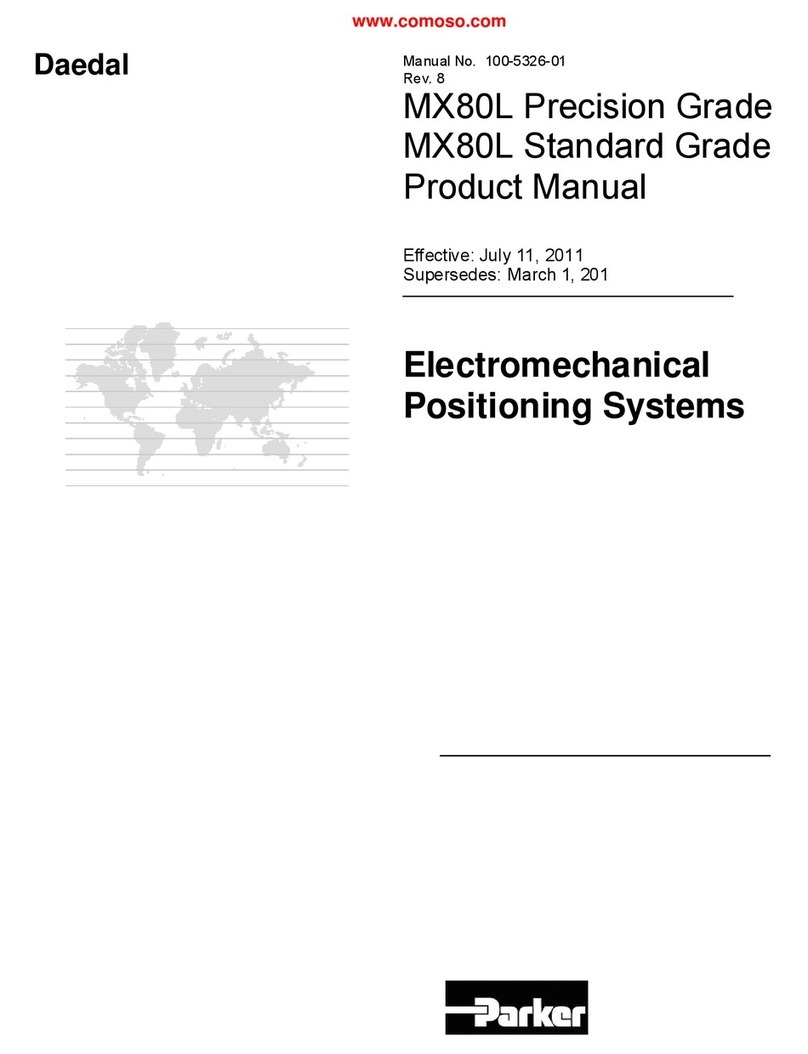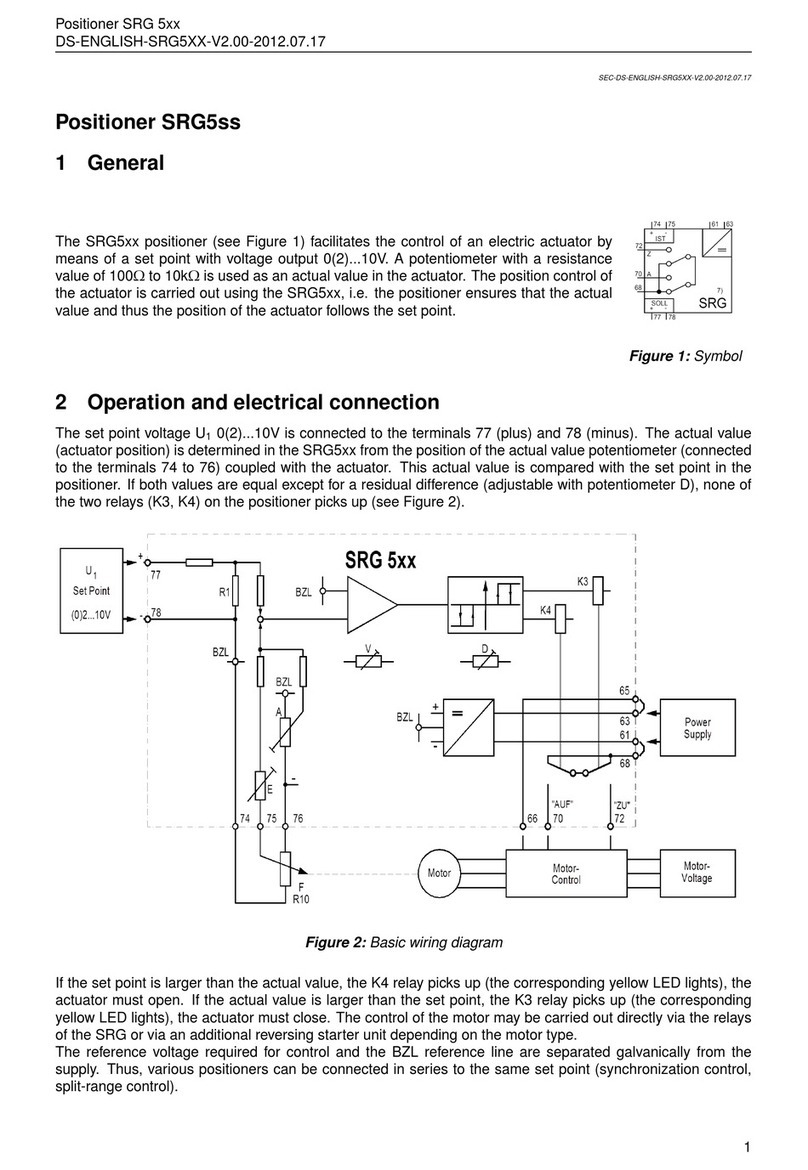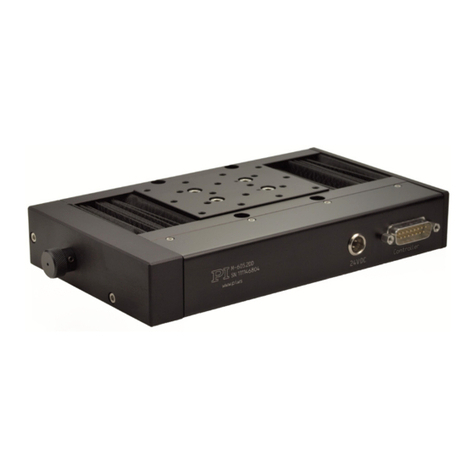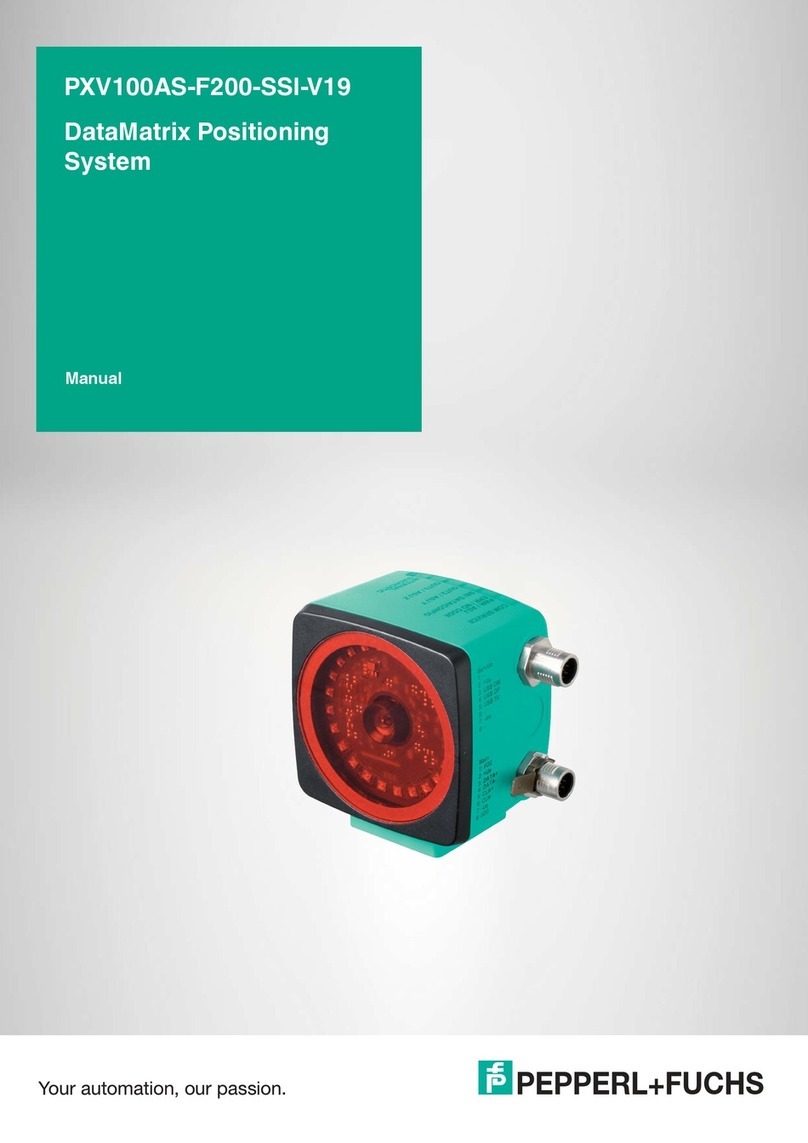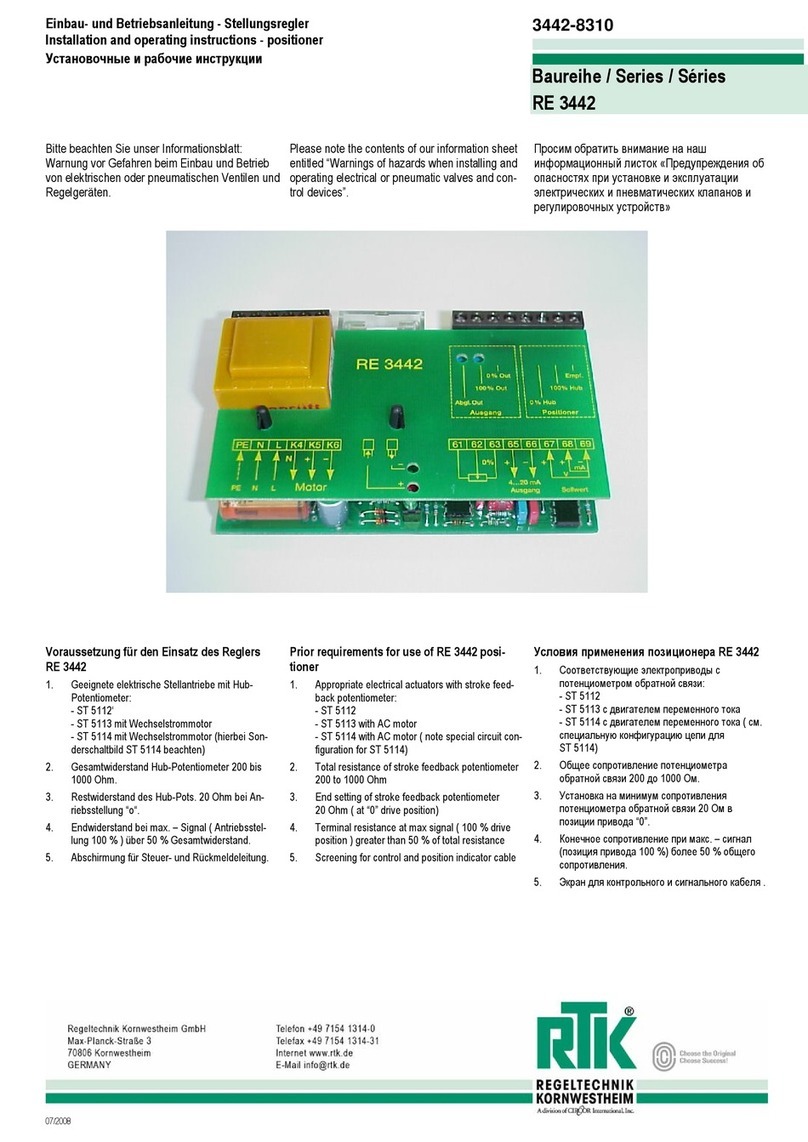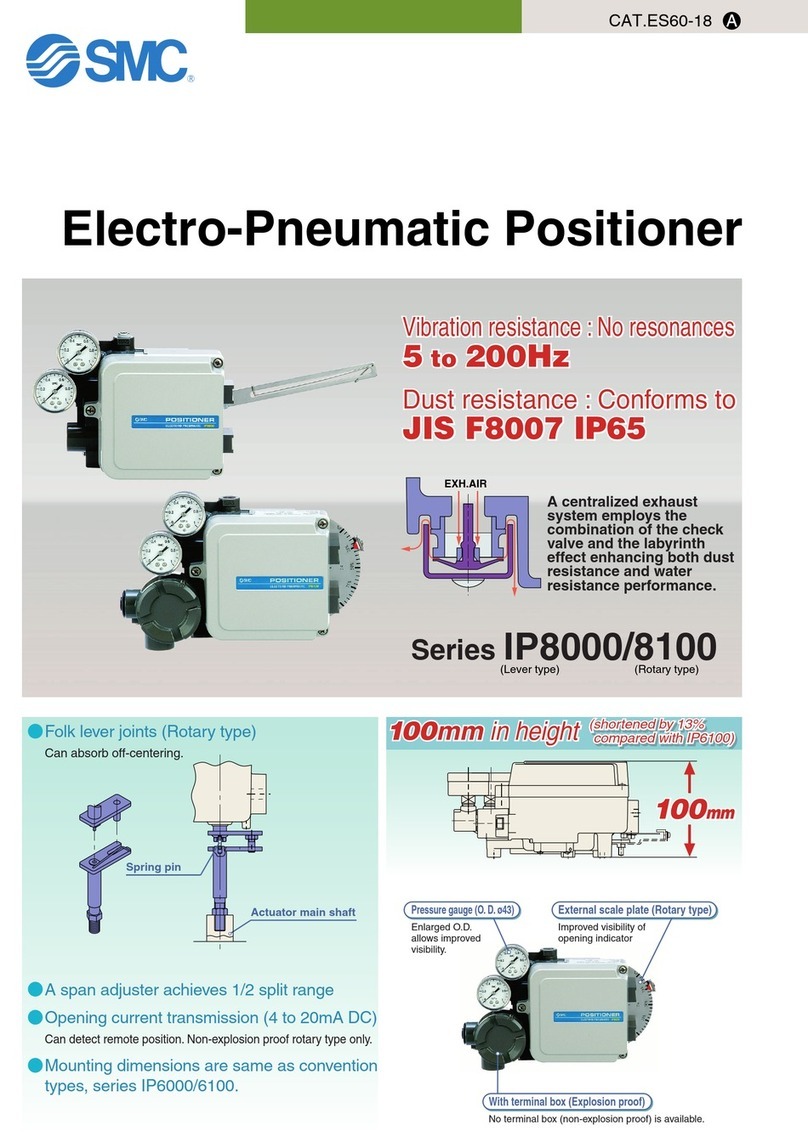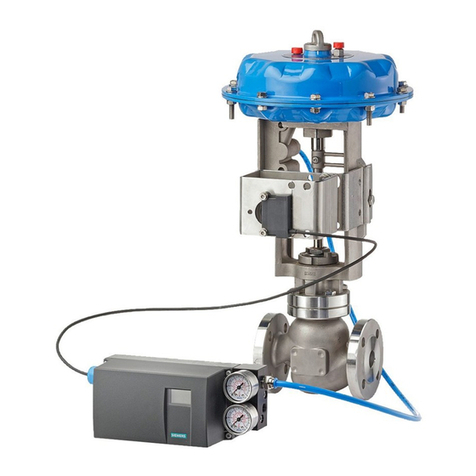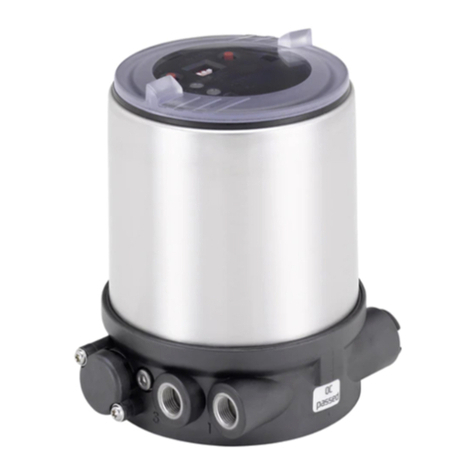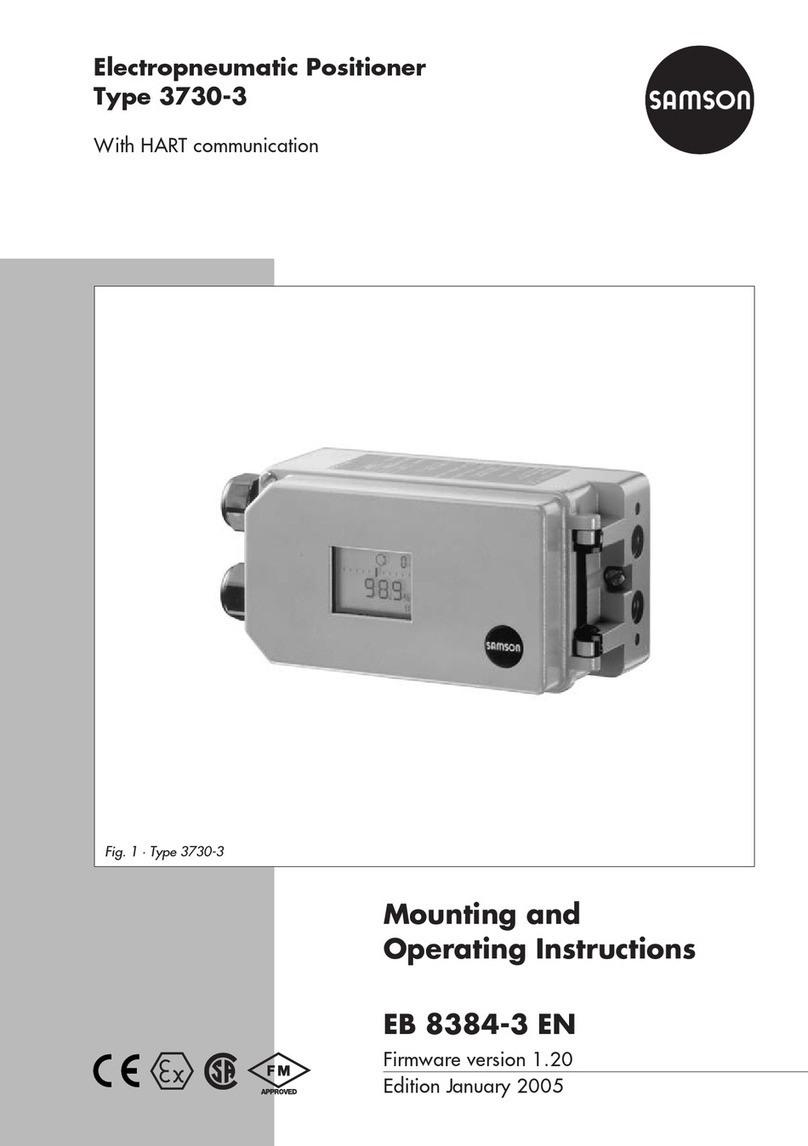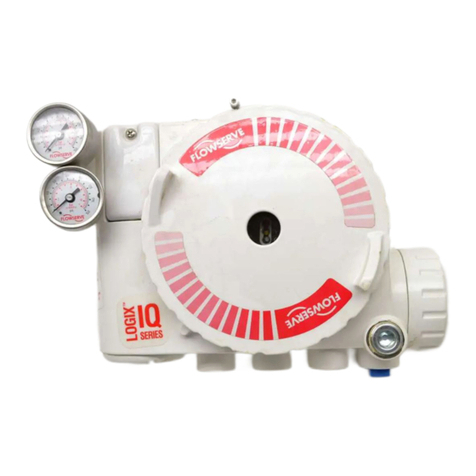
Positioner SRG 2xx
DS-ENGLISH-SRG2XX-V2.00-2012.07.17 4 Instructions for adjustment
is too small, the actuator will start to oscillate. In case of actuator oscillation, the switching difference must be
increased. This is achieved by turning potentiometer D in a counter-clockwise direction.
Figure 9: Switchpoints of 3-point controller
Filter V:
The filter type used is a phase-zero filter. This filter limits the increase speed of the control deviation. The
effect of disturbances (high increase speed) is reduced effectively without impairing the control behaviour.
ATTENTION! A too large filter effect will cause the actuator to oscillate.
The filter effect is reduced by turning the potentiometer V in a clockwise direction.
Adjustment procedure:
Adjust actuator according to operating instructions for the actuator and set jumper J1 to position 0...20mA (see
Figure 8). Set filter effect to minimum position by turning potentiometer V in clockwise direction.
Initial value: Feed 0mA (terminals 77 and 78) at set point input. The actuator moves into final position
"CLOSED" and is switched off via microswitches S1 (torque depending closing) or S3 (travel depending clos-
ing). Turn potentiometer A on SRG in clockwise direction until relay K3 is released (can be seen on LED).
Final value with set point 0...20mA: Feed 20mA (terminal 77 (plus) and terminal 78 (minus) at set point
input. The actuator moves in direction "OPEN" and the travel switch S4 (travel depending opening) and torque
switch S2 (torque depending opening), respectively, should switch. If S4 or S2 have not already switched, turn
potentiometer E in clockwise direction until S4 or S2 responds and relay K4 remains picked up. Then turn
potentiometer E slowly in counter-clockwise direction until relay K4 is released and K3 does not pick up yet
(switching difference).
Final value at set point 4...20mA: Feed 16mA (terminal 77 (plus) and terminal 78 (minus)) at set point input.
The actuator moves in direction "OPEN" and the travel switch S4 (travel depending opening) and torque switch
S2 (torque depending opening), respectively, should switch. If S4 or S2 have not already switched, turn poten-
tiometer E in clockwise direction until S4 or S2 responds and relay K4 is released. Increase nominal value to
20mA, K4 picks up. Turn potentiometer A in counter-clockwise direction until relay K4 is released and K3 does
not pick up yet.
Control and correction of adjustment: Initial value: Feed minimum set point (0 or 4mA). The actuator
moves into final position "CLOSED". If S3 or S1 switches and K3 remains picked up, turn potentiometer A in
clockwise direction until K3 is released and K4 does not pick up yet. If K3 is released and S3 or S1 has not
switched yet, turn potentiometer A in counter-clockwise direction until S3 or S1 switches. If K3 remains picked
up, turn potentiometer A in clockwise direction until K3 is released and K4 does not pick up yet.
Final value: Feed set point 20mA. The actuator moves into final position "OPEN". If S4 or S2 switches and
K4 remains picked up, turn potentiometer E in counter-clockwise direction until K4 is released and K3 does not
3
